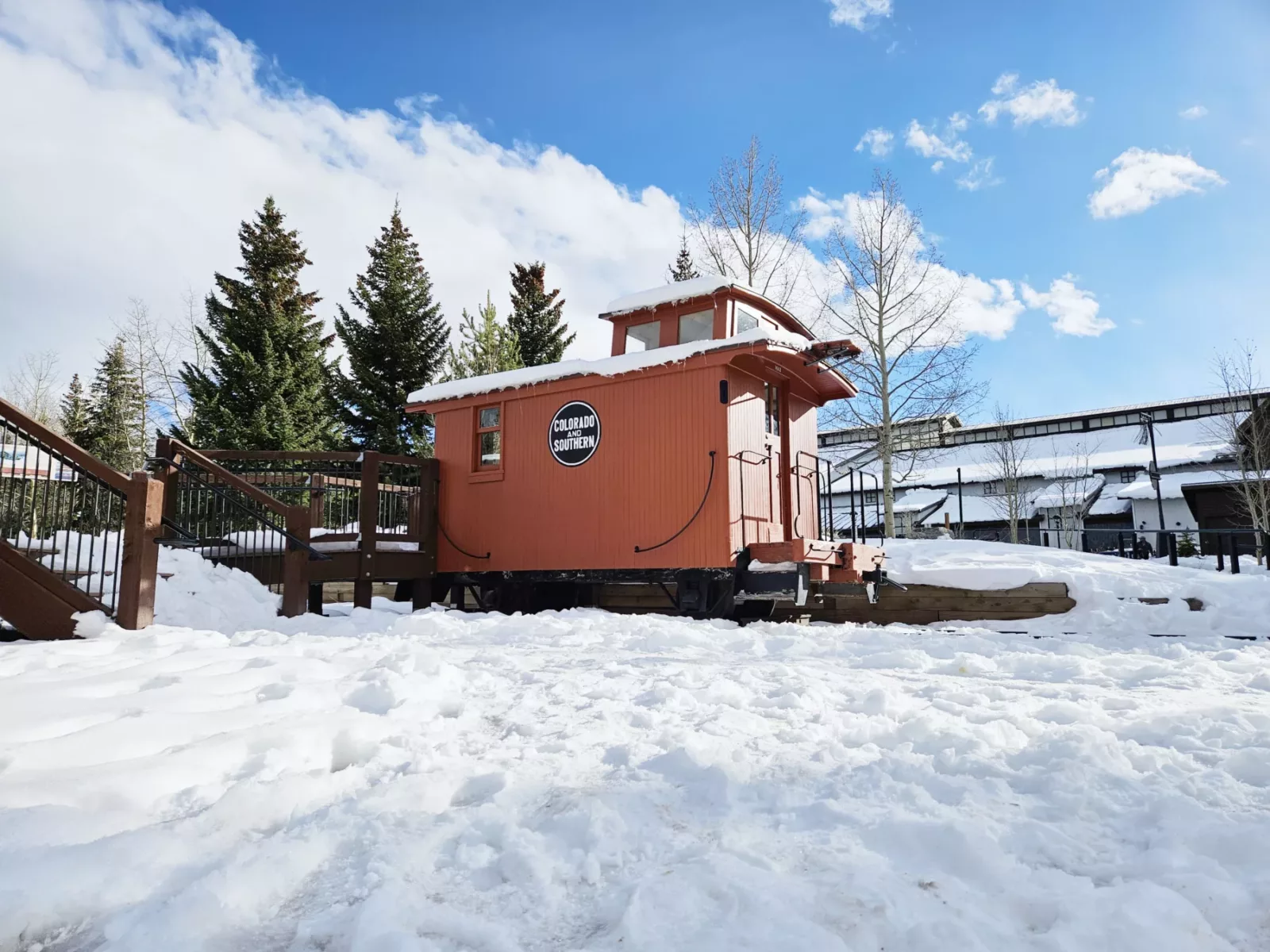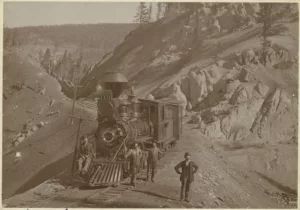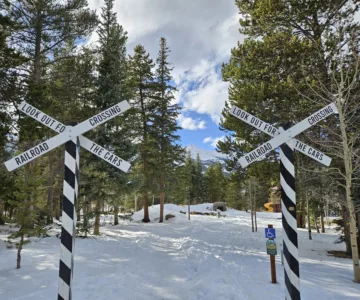High Line Railroad Park
About High Line Railroad Park
When the first train arrived in Breckenridge in 1882, the course of the town’s future changed. With more supplies and amenities available, Breckenridge prospered and grew. Today, the High Line Railroad Park, which sits parallel to the original rail right of way, showcases original rail equipment and displays about the town’s railroad history. A mining and railroad themed playground is a popular attraction for families. This is an outdoor historic park with limited amenities (trash receptacles, picnic tables). The closest restrooms for public use are located at the Stephen C. West Ice Arena.

Schedule & Cost
Parking Info
Please park on the north end of the Ice Rink parking lot.
Learn more about railroad history
The South Park line began laying track in Como in 1881, reaching Breckenridge by 1882. Read more about this history here. To see additional railroad photos visit the Breckenridge History Archives.
Schedule & Cost
Parking Info
Please park on the north end of the Ice Rink parking lot.
History of High Line Railroad Park
![]() Read our blog post on the history of Engine No. 9. On loan from History Colorado, this historical engine now sits as a centerpiece of High Line Railroad Park.
Read our blog post on the history of Engine No. 9. On loan from History Colorado, this historical engine now sits as a centerpiece of High Line Railroad Park.
You can also learn more about the history of the park through the below video from the Denver, South Park & Pacific Historical Society:
High Line Railroad Park is a great stop for history lovers, train enthusiasts, and kids. It is an outdoor space that lets you play your way through history.
“So glad to see all these exquisite examples of Colorado narrow gauge railroading were saved and preserved. Thanks to those involved.”
“Learned a lot about the history of the trains in Breckenridge – small but well curated museum with knowledgeable staff!”
“Great playground for kids. Really cool small museum with neat photos and historical perspective.”
The railroad serviced Breckenridge for 55 years; coming to town in 1882 and ceasing in 1937. The only major interruption was during “the big snow” of 1898-1899 when rail service was shut down for 79 days.





